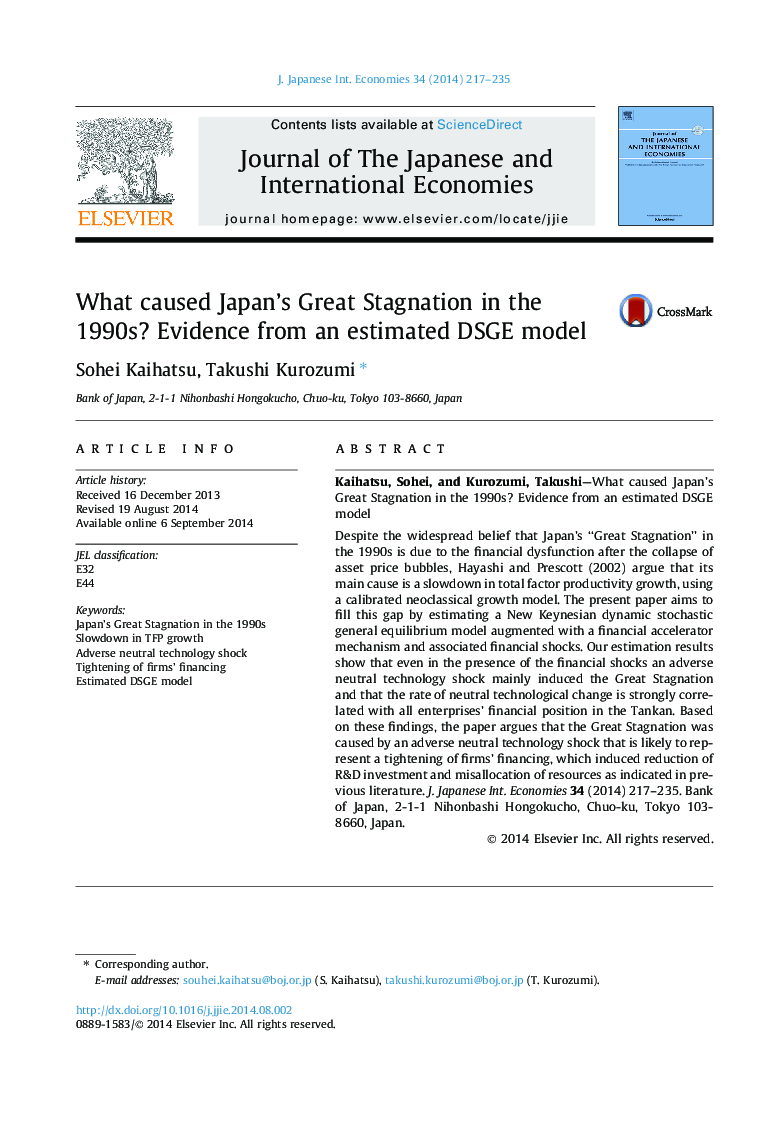| کد مقاله | کد نشریه | سال انتشار | مقاله انگلیسی | نسخه تمام متن |
|---|---|---|---|---|
| 964492 | 1479203 | 2014 | 19 صفحه PDF | دانلود رایگان |

• Which shock is the main cause of Japan’s Great Stagnation in the 1990s?
• What does the shock really represent?
• A model with a financial accelerator mechanism and financial shocks is estimated.
• An adverse neutral technology shock mainly induced the Great Stagnation.
• This shock is then likely to represent a tightening of firms’ financing.
Despite the widespread belief that Japan’s “Great Stagnation” in the 1990s is due to the financial dysfunction after the collapse of asset price bubbles, Hayashi and Prescott (2002) argue that its main cause is a slowdown in total factor productivity growth, using a calibrated neoclassical growth model. The present paper aims to fill this gap by estimating a New Keynesian dynamic stochastic general equilibrium model augmented with a financial accelerator mechanism and associated financial shocks. Our estimation results show that even in the presence of the financial shocks an adverse neutral technology shock mainly induced the Great Stagnation and that the rate of neutral technological change is strongly correlated with all enterprises’ financial position in the Tankan. Based on these findings, the paper argues that the Great Stagnation was caused by an adverse neutral technology shock that is likely to represent a tightening of firms’ financing, which induced reduction of R&D investment and misallocation of resources as indicated in previous literature.
Journal: Journal of the Japanese and International Economies - Volume 34, December 2014, Pages 217–235